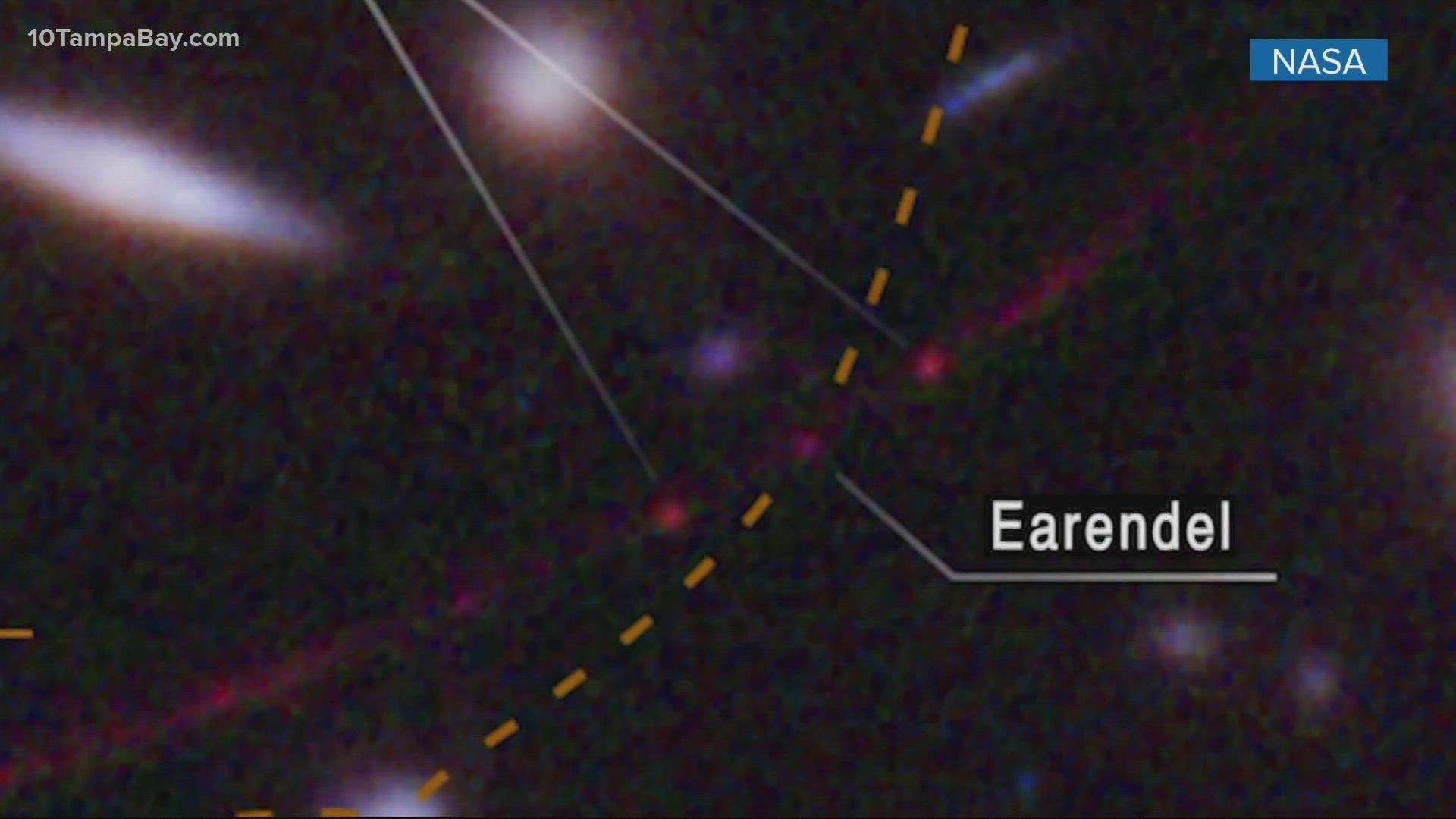CAPE CANAVERAL, Fla. — NASA's Hubble Space Telescope has broken yet another record by spotting the farthest individual star ever seen in the universe.
The nation's top space agency says light from the star, nicknamed "Earendel" by its discoverers, took 12.9 billion years to reach Earth. That means we're seeing the star as it existed around a few hundred million years after the Big Bang when our universe was only 7-percent of its current age, according to experts.
"The find is a huge leap further back in time from the previous single-star record holder; detected by Hubble in 2018," a press release reads.
Hubble was reported to use gravitational lensing to detect Earendel. From there, experts say the discovery was made from data collected during Hubble's RELICS program.
Prior to the most recent discovery, NASA says clusters of stars embedded inside early galaxies were the smallest previous objects observed from such a distance.
“We almost didn’t believe it at first, it was so much farther than the previous most-distant, highest redshift star,” said astronomer Brian Welch of the Johns Hopkins University in Baltimore.
Researchers estimate Earendel rivals "the most massive stars known" since it is at least 50 times the mass of the sun and millions of times as bright. The star is also exciting for experts given it could open up an "uncharted area" of early star formation.
“Earendel existed so long ago that it may not have had all the same raw materials as the stars around us today,” Welch said. “Studying Earendel will be a window into an era of the universe that we are unfamiliar with, but that led to everything we do know. It’s like we’ve been reading a really interesting book, but we started with the second chapter, and now we will have a chance to see how it all got started."
NASA's James Webb Space Telescope will now make an observation of Earendel since astronomers say its high sensitivity to infrared light is needed to help learn more about the star.
“With Webb we expect to confirm Earendel is indeed a star, as well as measure its brightness and temperature. These details will narrow down its type and stage in the stellar lifecycle. We also expect to find the Sunrise Arc galaxy is lacking in heavy elements that form in subsequent generations of stars. This would suggest Earendel is a rare, massive metal-poor star,” Dan Coe at the Space Telescope Science Institute (STScI) said.

